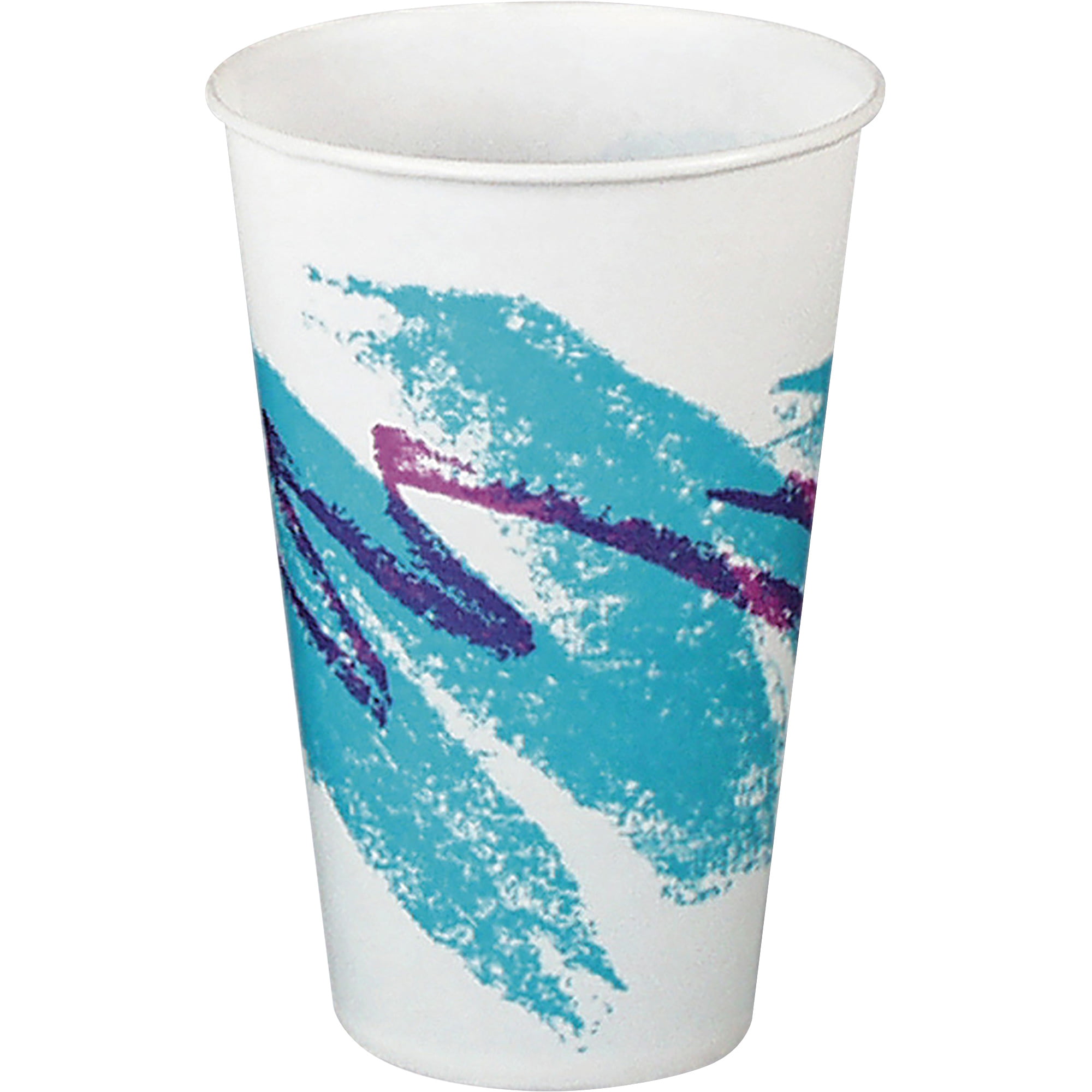Table Of Content

Artists and graphic designers also reference or remix the Jazz aesthetics in their work. This highlights its enduring relevance in contemporary visual culture. The Jazz design’s appeal extended beyond its visual presence; it became a cultural touchstone for a generation.

Branding for Printed Paper Cups is Vital
Puma TRC Blaze Court Basketball Shoes Resemble Jazz Paper Cups - Sports Illustrated
Puma TRC Blaze Court Basketball Shoes Resemble Jazz Paper Cups.
Posted: Sun, 30 Oct 2022 07:00:00 GMT [source]
Imagine a plastic cup and one particular red-wrapped variant will likely come to mind, designed in the 1970s by Robert Leo Hulseman, son of the Solo Cup Company’s founder. In the realm of paper cups, there is a parallel icon — the dynamic “Jazz” pattern is also a classic, but its history and the artist behind it were largely a mystery until recently. Gina Ekiss, a designer at Sweetheart, entered a design featuring vibrant teal and purple colors, a choice inspired by her tastes and the goal of creating something harmonious.

Newsletter Signup
Internet Can't Get Over Travis and Jason Kelce's Vintage-Inspired Ski Suits - Parade Magazine
Internet Can't Get Over Travis and Jason Kelce's Vintage-Inspired Ski Suits.
Posted: Fri, 08 Dec 2023 08:00:00 GMT [source]
The pattern had to be as simple as possible, so it wouldn't look "wrong" if it misprinted somehow. After all, Sweetheart was churning out more than 9 billion products a year at the time. She created three or four designs for the contest and “Jazz” is the one the corporate headquarters ended up choosing. Gina Ekiss, of Aurora, Missouri, designed the original artwork with charcoal.
Best paper cups designs
The design is also made with a design consistency where the colours that are used in the design are the same as in their logo. The design is descriptive, as it illustrates the activity of the company and the different products that they offer. Paper cups with print can be used for a broad variety of purposes such as promoting a political campaign.
The Jazz design was created in 1991 by an artist in the Springfield, Missouri Art Department at Sweetheart. Sweetheart had an internal contest to come up with a new stock design and Gina’s Jazz Design was selected. Full blown production across multiple products did not start until early 1992. There were no big bonuses or royalties or celebrations — Ekiss was simply a staff designer who continued to work for a salary at Sweetheart until the early 2000s.
Sweetheart has since been acquired by Solo, which in turn was acquired by the Dart Container Corporation, adding layers of complexity to the search for the pattern’s origins. Fans of 90s jazz appear to hold a significant interest in the nostalgia that the design evokes rather than the identity of its creator. The “Solo Jazz Pattern” not only enjoys the status of a “Confirmed Meme” (an established concept) but also features in over 500 listings on Etsy. Even after several decades since its inception, the teal and purple swirls continue to appear on various items such as stickers, clothing, and even contemporary websites.
Jazz - Pint Glass, 16oz
From fashion to smells, there's almost nothing that can't give us flashbacks of our childhood. But one of the mostly strangely evocative trips down memory lane comes when we look at those plastic solo cups with the purple and blue designs. The company doesn't make them anymore, and wants to redesign them to be more modern should they release them again. "It just doesn't really fit out there anymore," a representative from the company that now owns the facility where the cups were made told Gounley. To this day, Ekiss keeps a few Jazz-adorned objects around and still sees them when she’s out and about. The design is anachronistic or nostalgic, depending on one’s perspective, but either way, it is persistent.
Yeti 20 oz Solo Cup Tumbler
But, against all odds, the design is still around, and still selling like hot cakes around the world. Ekiss worked at the Sweetheart Cup Company in Springfield, Missouri, from 1987 to 2002, before the company was bought by Solo and moved their art department to Baltimore. In the first few years she was with the Sweetheart Cup Company, they held a contest to come up with a new design for the mass-produced cups. During an interview, Ekiss presented her original charcoal sketches.
Ekiss got the first hint that her design was special when she retired in 2002. The company revealed to her that Jazz was their best-selling design of all time. Thomas Gunley, a reporter for Missouri's News-Leader newspaper, dug into the Jazz cup mystery and found the answer in his own backyard. But a local reporter pulled off some expert sleuthing to find the woman behind the iconic design, and finally got the answers we've waited decades for. One of the parameters for the contest was that the design could only be one or two colors because they were going to be run at a fast speed on the presses. The original artwork was actually drawn with charcoal, Ekiss explained.
This appeal spans older generations and new audiences who appreciate the retro look. Both Stephanie and Gina claim that they created the design for an internal contest at their respective companies. However, Stephanie is adamant that her design came first and speculates that it was stolen, brought to Sweetheart Cup Company, and traced or adapted by Gina. The shimmery gold scalloping that lines the top of these otherwise unadorned kraft paper cups look like streamers strung from the ceiling at a party we’d like to attend. The grey background makes the different colours chosen for the words stand out, and it is easy for the customer to read the words while holding the cup.
After looking through public records and coming across Ekiss' name and address, Gounley drove to her house and confirmed his suspicions. On the other side you can see their company logo, address, and contact information so customers get all the necessary information. The design for Bogo Sandwich matches the company’s value perfectly – their products are “made with love”. This design connects the customers with the producers, and clearly demonstrates that the products consumed are produced locally. PAM Roastery have also added their social media accounts, to let their customers know that they could always find them online and discover their special offers or events. The retro design, appropriately called “Jazz,” has been immortalized on tons of fun merchandise from T-shirts to sneakers, bicycle helmets and nail art, to name just a few.
And 90s jazz fans seem to care a lot more about the nostalgia that the design sparks than whoever made it. Not only does “Solo Jazz Pattern” hold “Confirmed Meme” status (an actual thing), it also shows up in more than 500 Etsy listings. Decades after its creation, the teal and purple squiggles still show up on stickers, clothes, and even modern websites. Just look at the opening credits for popular TV shows from the era, like Saved by the Bell, Fresh Prince, and Hangin’ with Mr. Cooper. All of them feature funky and slightly chaotic animations full of zig zags and clashing patterns.
Eclectic shapes, neon colors, and busy illustrations were quintessential aspects of 90s web, fashion, and graphic design. The winning design — then simply called “jazz” — used only two colors and was intentionally messy. This allowed the printers to move quickly without worrying about the crispness of the image or whether or not the crayon-like squiggles aligned. The reporter only knew the designer's first name as well as the fact that she had worked for the Sweetheart Cup Company, which was later bought by Solo Cup Company. He eventually found a tweet from a person claiming to be the creator's daughter, according to his article.
A random tweet from the designer's son lead him to Gina Ekiss, now 50. Ekiss had been working at Sweetheart in 1991, when the company launched a contest in its art department to design a new cup pattern. Today, the very 1990s-style teal-and-purple Jazz design can be found on t-shirts, sandals, bumper stickers and other fan-made merchandise. Originally, though, it was applied by the Sweetheart Cup Company to a series of plates, bowls and cups.
The Jazz design emerged from a corporate contest, capturing the essence of an era and becoming a cherished relic. Its story combines design simplicity, accidental fame, and a touch of internet-era controversy. This illustrates how everyday objects can evolve into symbols of collective memory. Looking back, it’s clear that the Jazz Cup is more than just its creator or the specifics of its creation.

No comments:
Post a Comment